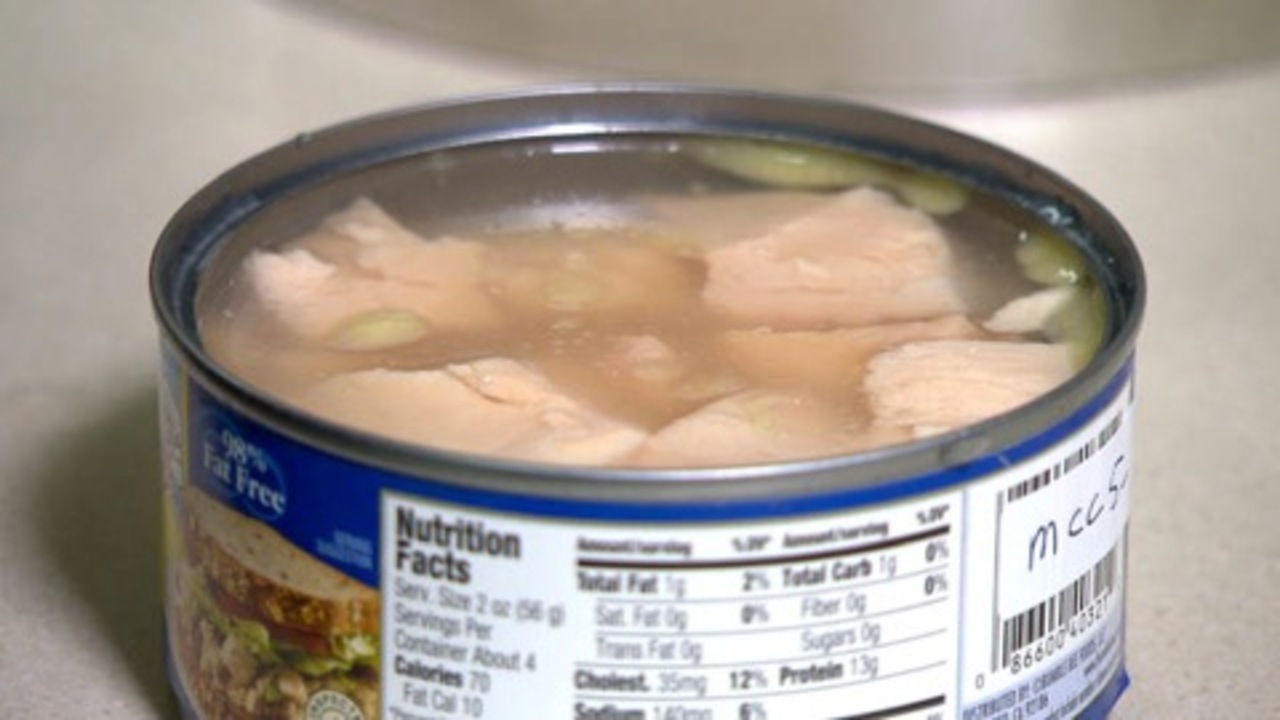Imagine you’re at the grocery store, browsing the aisles for something quick and nutritious to add to your meal. As you reach for a can of tuna, your curiosity piqued, you can’t help but wonder about that mysterious liquid inside. What is it exactly? Well, get ready to dive into the fascinating world of canned fish and uncover the secrets behind that liquid. You’ll be surprised to learn about its purpose, composition, and the potential benefits it holds. So, before you crack open that can, let’s unravel the mystery together.
Understanding Canned Fish Liquid
Understanding the composition and benefits of the liquid in canned fish is essential for making informed choices about its consumption. The liquid in canned fish is usually oil, which helps preserve the product and contains important fat-soluble vitamins. One of the key benefits of canned fish oil is its high vitamin D content. Vitamin D deficiency is associated with an increased risk of cardiovascular diseases, and canned oily fish like tuna provides significant doses of this essential vitamin. However, it is important to note that some canned fish may also contain brine, which can increase sodium levels. High sodium intake is linked to an increased risk of hypertension. Therefore, it is crucial to check the labels for possible additives and regulate your sodium intake accordingly. While canned fish oil offers numerous benefits, it is important to avoid excessive consumption. Like any food, consuming too much canned fish can have health risks. Therefore, it is recommended to consult a professional for personalized advice and recommendations regarding your canned fish consumption.
Health Implications of Canned Fish Liquid
The liquid in canned fish can have various health implications that should be considered when consuming these products. Here are some key points to understand:
- Health risks: Canned fish may contain high levels of sodium, which can increase the risk of hypertension and cardiovascular diseases. It is important to monitor your sodium intake and choose low-sodium options when available.
- Nutritional value: The liquid in canned fish can contain important nutrients, such as fat-soluble vitamins like vitamin D. Vitamin D deficiency is associated with an increased risk of cardiovascular diseases, so consuming canned fish can help improve your vitamin D levels and promote cardiovascular health.
- Sodium content: Some canned fish may be packed in brine, which can significantly increase the sodium content. High sodium intake is linked to various health issues, so it is advisable to choose canned fish packed in water or low-sodium options to reduce your sodium intake.
- Impact on cardiovascular health: Consuming canned fish, particularly oily fish like tuna, can provide significant doses of vitamin D, which has been shown to have a positive impact on cardiovascular health. Including canned fish in your diet can help improve your vitamin D levels and support a healthy heart.
Considering these health implications, it is important to read labels, choose low-sodium options, and consume canned fish in moderation as part of a balanced diet to reap the nutritional benefits while minimizing potential risks.
Liquid in Canned Vegetables
When examining canned vegetables, it is important to consider the composition and implications of the liquid present in the cans. Most canned vegetables contain a liquid consisting of water, ascorbic acid, and sometimes salt. The liquid in canned vegetables is harmless unless you need to regulate your sodium intake. It is advisable to check the labels for possible additives beyond ascorbic acid and consume the liquid in moderation if present. Some people wash canned legumes before use due to the liquid altering their taste. However, consuming the liquid in canned vegetables can help retain water-soluble vitamins like B vitamins.
Canned vegetables offer similar nutritional benefits to fresh varieties and are convenient and competitively priced. They allow for the consumption of non-seasonal foods and provide enough reserves for regular use. Canned vegetables also offer versatility and convenience in meal planning. However, it is essential to be mindful of the liquid composition in canned vegetables, especially if you are watching your sodium intake. High sodium intake is linked to an increased risk of hypertension. Therefore, it is advisable to limit the intake of packing liquid if there are additional preservatives beyond sodium or ascorbic acid. It is always recommended to consult a professional for personalized advice and recommendations regarding canned vegetables and their liquid composition.
Benefits of Canned Vegetables
To further explore the advantages of canned vegetables, let’s now examine the numerous benefits they offer in terms of nutrition, convenience, and versatility.
- Nutritional Value: Canned vegetables retain much of their nutritional value due to the preservation process. They contain essential vitamins and minerals, such as vitamin C and potassium, which are important for maintaining a healthy diet.
- Cooking Methods: Canned vegetables can be easily incorporated into various cooking methods, including boiling, sautéing, and roasting. This allows for quick and convenient meal preparation.
- Sodium Content: While some canned vegetables may contain added salt, many low-sodium options are available. It is important to check the labels to regulate your sodium intake and choose options that align with your dietary needs.
- Taste Alteration: The liquid in canned vegetables may alter their taste slightly, but this can be minimized by rinsing the vegetables before use. Additionally, the liquid can be used as a base for flavorful sauces or broths.
Considerations for Canned Food Liquid
Considerations should be taken into account when it comes to the liquid in canned food. The liquid in canned fish plays a crucial role in preserving the fish and maintaining its flavor and texture. It acts as a natural brine solution, keeping the salmon moist and preventing it from drying out. Additionally, the liquid enhances the overall taste of the salmon and inhibits bacterial growth, prolonging its shelf life. However, it is important to note that some canned fish may contain brine, which can increase sodium levels. High sodium intake is linked to an increased risk of hypertension. Furthermore, canned fish, particularly oily fish like tuna, provides significant doses of vitamin D. Vitamin D deficiency is associated with an increased risk of cardiovascular diseases. Therefore, while the liquid in canned fish contributes to its preservation and taste, it is crucial to consider the potential health risks associated with sodium levels and to take into account the nutritional value, specifically the vitamin D content, when incorporating canned fish into your diet.
Using Fish Oil in Food and Cooking
The utilization of fish oil in food and cooking offers a multitude of benefits, building upon the preservation and flavor-enhancing properties of the liquid in canned salmon. Incorporating fish oil into your everyday meals can maximize the use of this nutritious ingredient in the kitchen. Here are some creative ways to cook with fish oil:
- Use fish oil in recipes: Replace olive oil with fish oil in your favorite salad dressings, marinades, or sauces. The rich flavor of fish oil can add a unique touch to your dishes.
- Enhance seafood dishes: Drizzle fish oil over grilled fish or shrimp for an extra burst of flavor. The natural juices in fish oil can complement the taste of seafood.
- Boost nutritional value: Add fish oil to your smoothies or shakes to increase the omega-3 fatty acid content. This can help promote brain health and maintain healthy skin.
- Experiment with baking: Substitute vegetable oil or butter with fish oil in baked goods like muffins or cookies. This can impart a subtle fish flavor and make your treats more nutritious.
Utilizing Canned Salmon Liquid
The liquid in canned salmon is not only a vital component for preserving the fish but also serves as a valuable ingredient that enhances the flavor and texture of your culinary creations. When it comes to utilizing the liquid in canned salmon, there are several cooking techniques you can employ to make the most of its flavor enhancing properties. You can use the liquid to keep recipes like salads or patties moist, as it adds depth of flavor and can be used as a base for sauces, dressings, or marinades. Additionally, you can strain the liquid and use it as a delicious seafood broth for soups or stews. The versatility of the liquid allows you to get creative and experiment with different ways to use it in your culinary endeavors. By incorporating the liquid in your recipes, you not only enhance the taste but also benefit from the health benefits of salmon, such as its high omega-3 fatty acid content, which is known for its anti-inflammatory properties. So, don’t let the liquid in canned salmon go to waste – explore different recipe ideas and enjoy the flavorful and nutritious benefits it has to offer.


